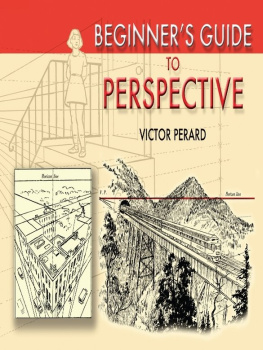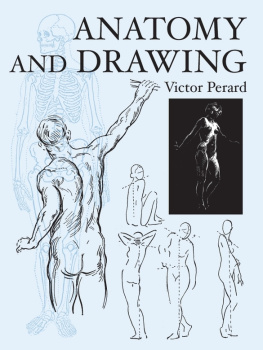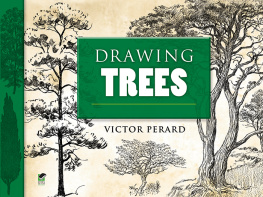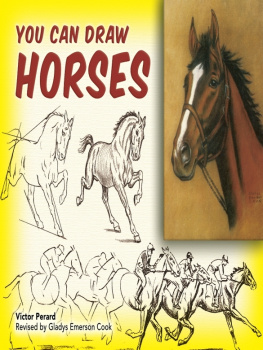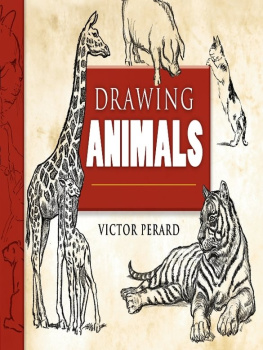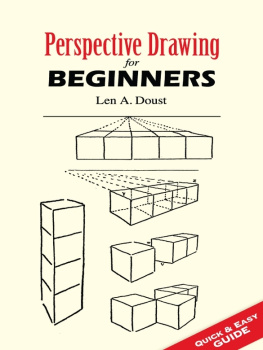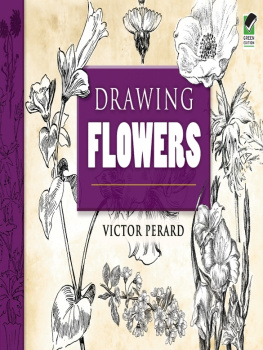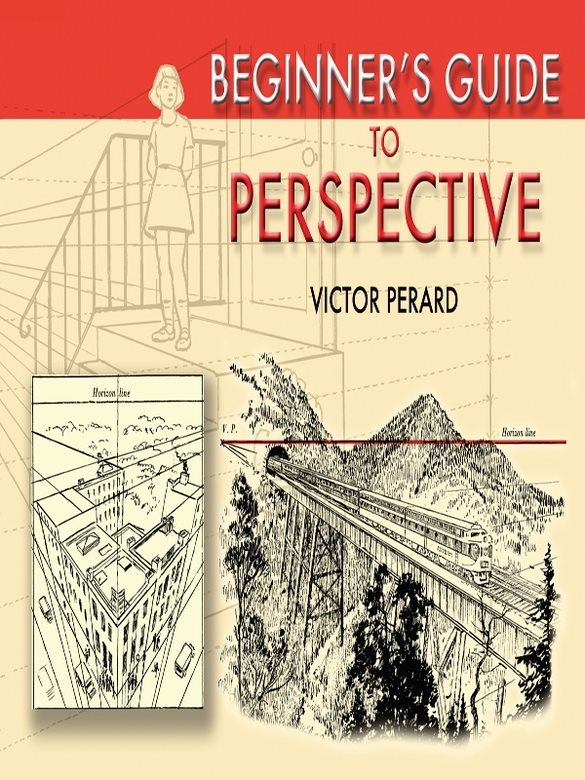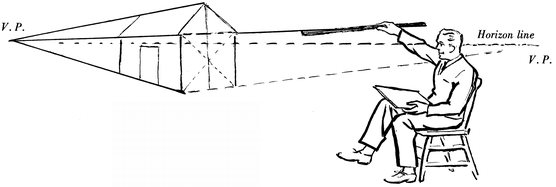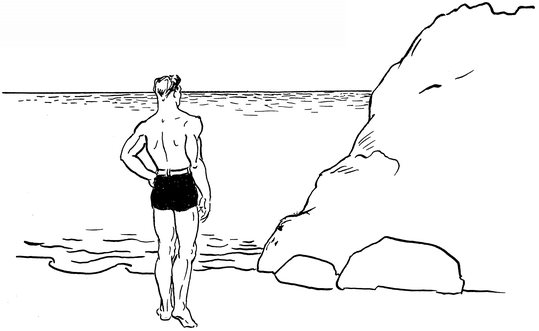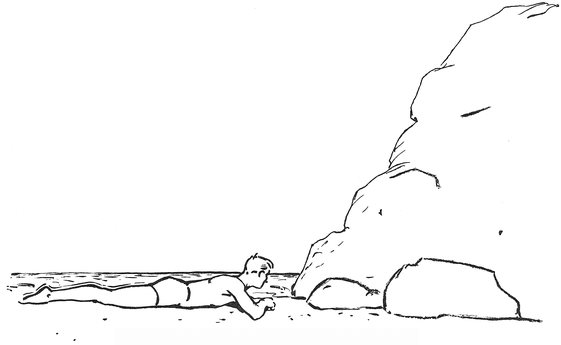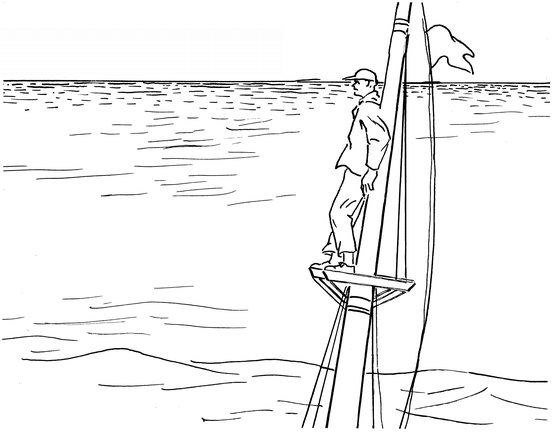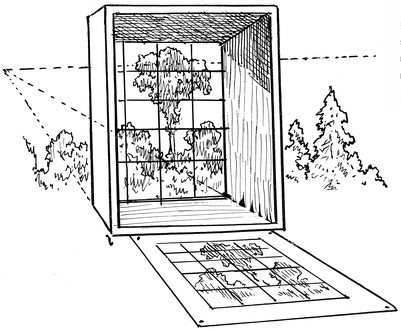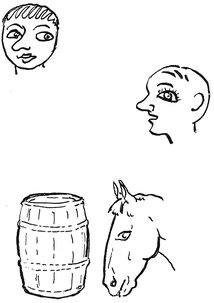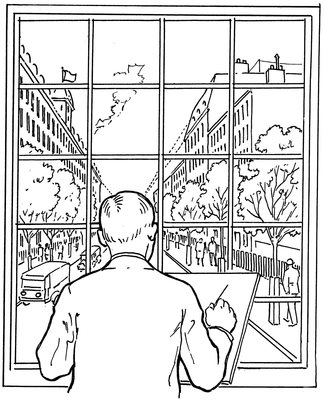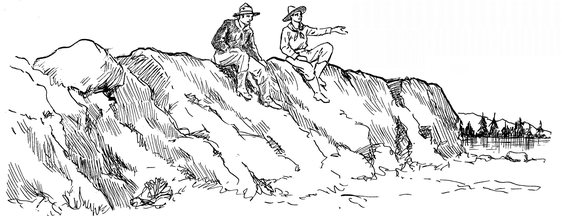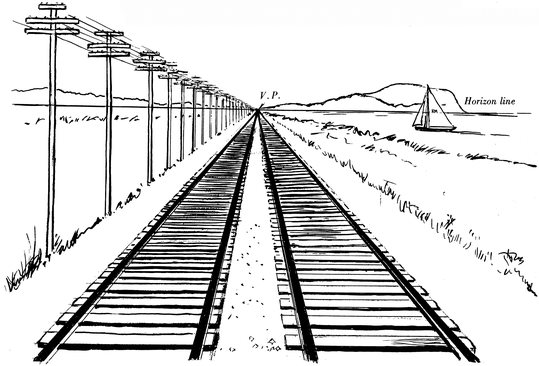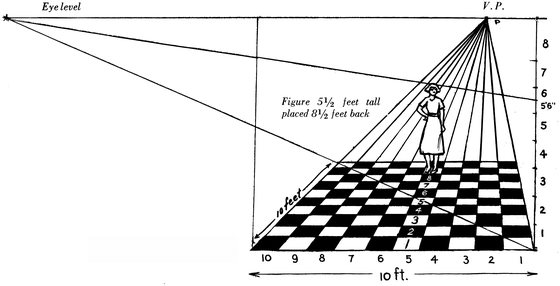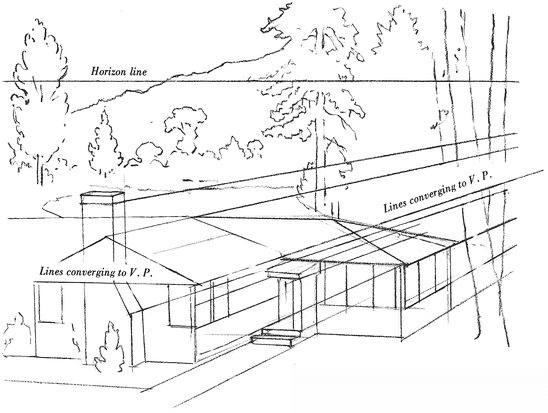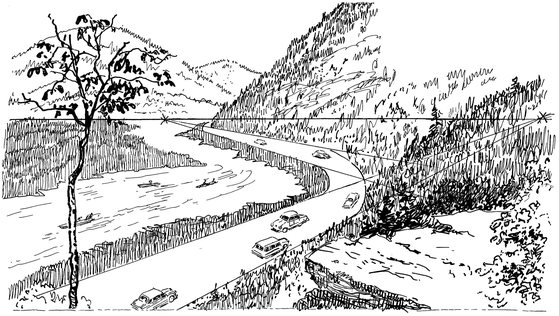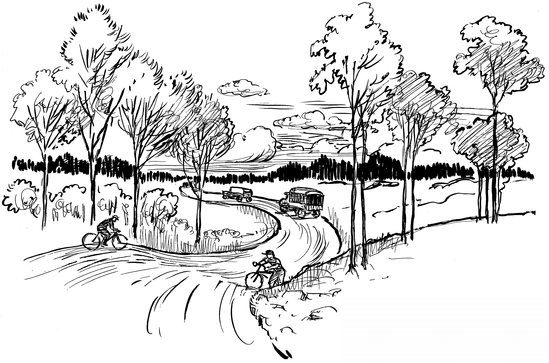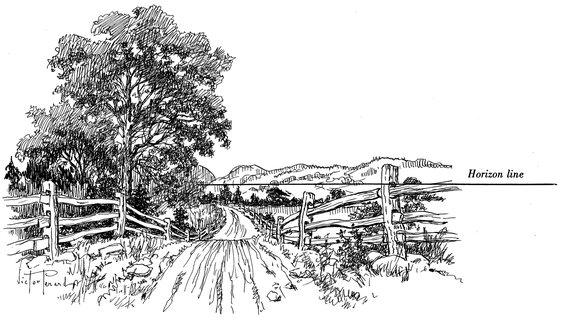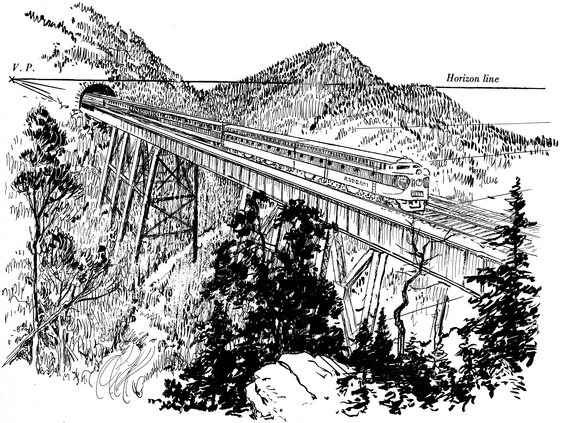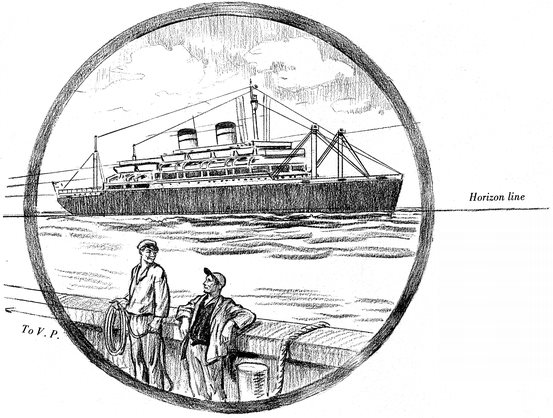Here, the exercise is measuring the apparently decreasing size of a figure as it grows distant from the viewers position.
Take a straight stick and study the angles the perspective lines take.
The horizon line is always on a level with the observers eyes.
When the observers position is low, the horizon line is low.
When the observers position is high, the horizon line is high.
In a very simple way you can make a good mechanical aid to help you draw and visualize perspective accurately. Take a box, remove the bottom, and divide the open end into squares by criss-cross threads, as illustrated. Set up this frame in front of the subject to be drawn and note how the squares divide the picture. Draw squares on your paper, and copy what you see through each square in the box. You will find that you have drawn objects in perspective. That is, you have drawn what your eyes tell you exists, and not what your mind knows exists.
A beginner will draw a front view of a face with a profile of the nose and a side view of the face with a front view of an eye. He is drawing what he knows exists rather than what he sees. How deceptive is the length of a horses head when it proves to be the length of a barrel. In perspective, objects are still more deceptive.
A square-paned window provides a framework of vertical and horizontal lines which helps to determine the angle of the perspective lines.
The vanishing point need not always be in the center of the picture. It may suit your composition better to shift it to one side or the other of the horizon line.
These two pictures illustrate how important the apparent sizes of objects within a picture are in relation to one another. The rocks and lanscape have remained the same size in both pictures. When the figures are drawn large, the rocks seem small in relation to them.
When the figures are drawn small, the rocks seem large in relation to the figures. This gives a totally different impression of the actual scene.
We know that the mountains are larger than the house, and that the house is larger than the man. Objects near us appear to be larger than objects further away from us, even if, in actuality, those in the distance are considerably larger than those nearest us.
The tracks are parallel with each other; the poles are all the same height. As they grow distant to the eyes, the rails appear closer to each other, and the poles appear smaller, until they reach a vanishing point.
This subject was viewed from a height which put the horizon line quite high on the page.
This is the same subject viewed with a lower horizon.
The vanishing point need not always be in the center of the picture.
The tiles are one foot square.
Basic lines and perspective lines
There is a different vanishing point for each curve of this winding road.
Here the problem is slightly more complicated, for there is a different set of vanishing points for each curve of the winding road going down hill.
The problem presented by this ink drawing of a road going down hill, below the horizon line, is that the fence and the road take on different vanishing points for each of their curves. If the road and the fence did not dip and curve, they would all have one vanishing point.
The ocean liner is placed directly on the horizon line. Perspective lines drawn from it will vanish somewhere considerably outside the frame of the picture. The same is true of lines drawn from the barge in the foreground.

